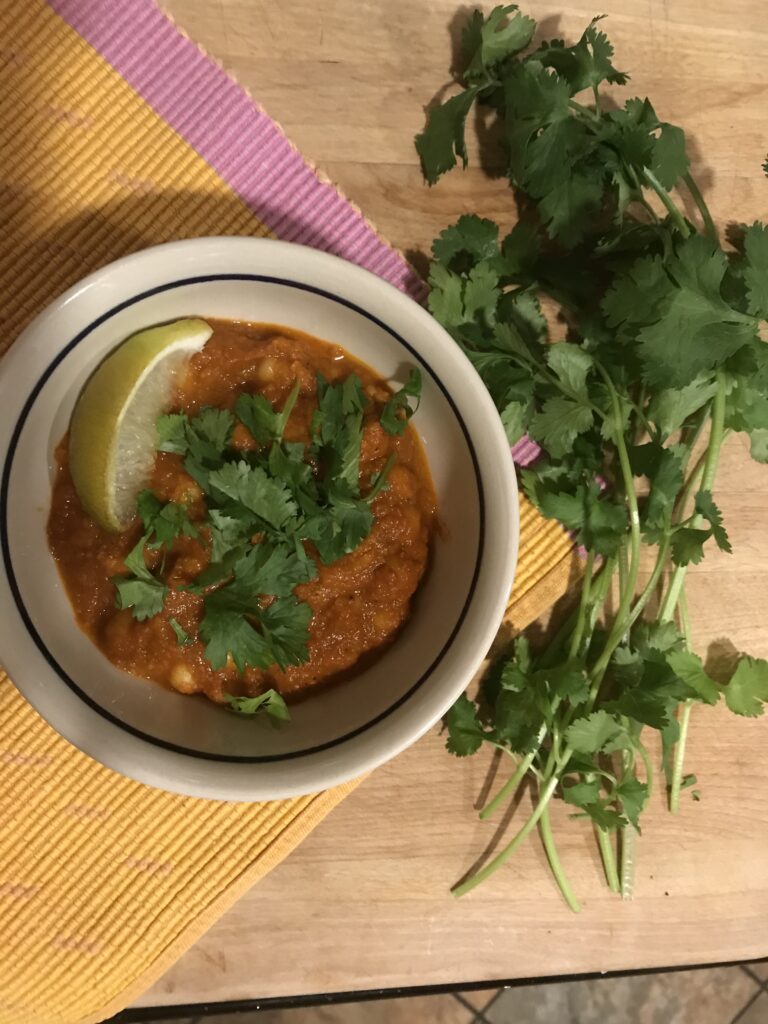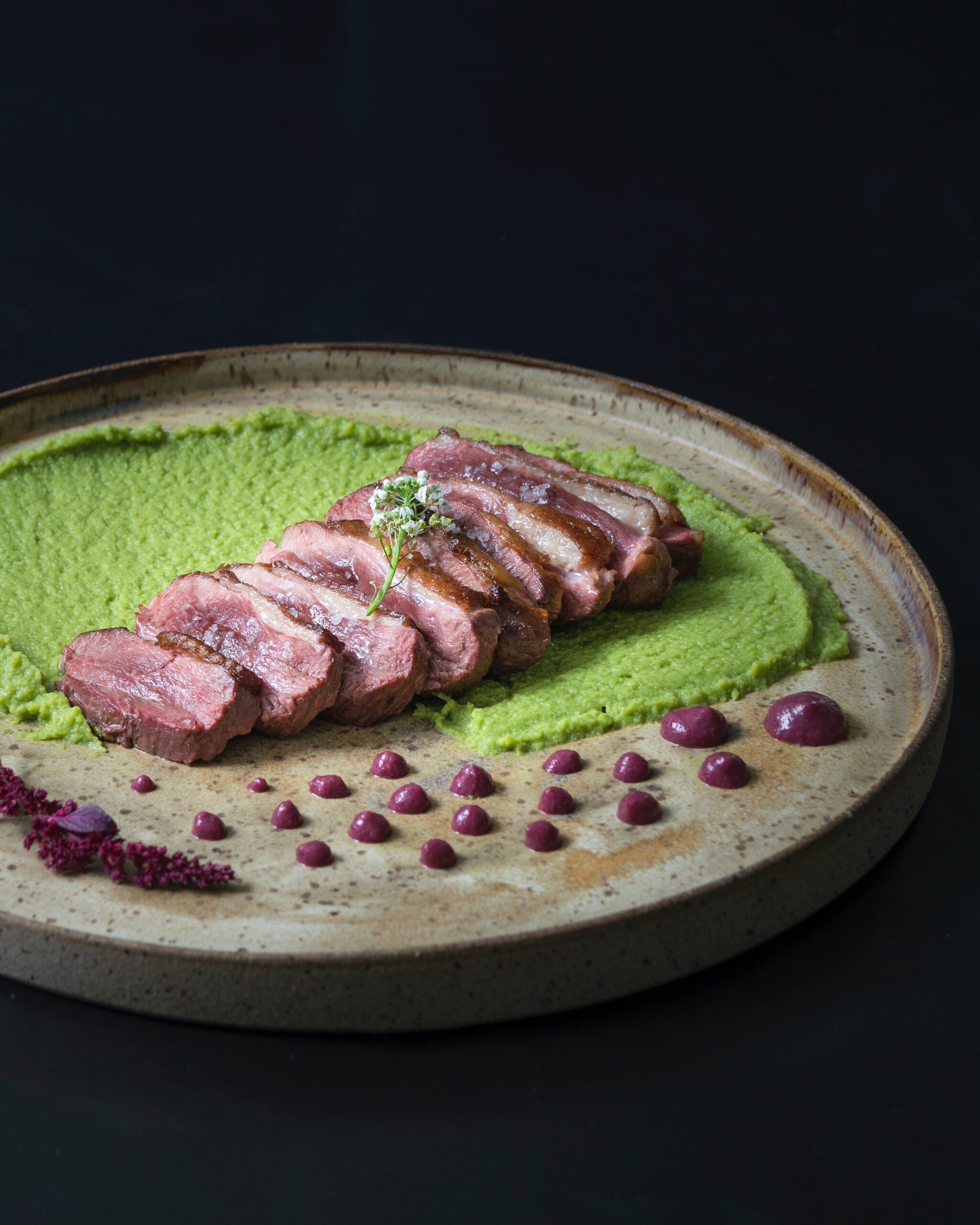
Have you ever walked past a glorious display of irresistible desserts in a restaurant window and been compelled to go inside and order one? I have. What about salivating at the aromas coming from a nearby bakery or pizzeria? Or can you recall the feeling of dipping your fingers into a bucket of buttery popcorn and hearing the satisfying crunch as you chomp it down?
When it comes to food, you might think that taste is the most important sense to consider. And while it definitely is important, it is by no means the only one that counts toward our satisfaction.
Close your eyes and think back to the kitchen of your childhood. What were your favorite kitchen aromas when you were growing up? You might say homemade bread, cinnamon rolls, chocolate chip cookies, or banana bread. Maybe it was beef stew or spaghetti sauce, or really anything with onions or garlic. I would guess the smell of pizza is appreciated nearly universally.
And when it comes to scents, who can resist the smell of coffee beans or fresh basil? Interestingly, Italian women would tuck a sprig of basil into their bodice as an aphrodisiac. And in ancient cultures, basil was regarded as a food of enlightenment. Mmmm. Maybe why I love it – but I digress.
The family cook – usually our mothers or grandmothers – would use food as a way to express their love. The tastes, smells, and textures of our childhood kitchen left indelible imprints on what we find soul-satisfying. Even if we have long ago left those preferences behind, we can be instantly transported back to those experiences when we catch a whiff of certain scents.
Yet scent is, again, just one sense that comes into play when we interact with our food.
In order for food to be fully nutritive, it should nourish all of our senses: taste, texture, visual appeal, mind, body, and soul – in addition to smell. It sounds like a tall order, but it’s something that we will want to pay attention to.
There are at least three ways that our senses serve our spiritual and physical health in regard to food.
- During food preparation.
- In the digestive process.
- In fulfillment of pleasure.
Food preparation is intimidating for many folks. Yes, it definitely helps to have basic cooking skills such as proper use of a knife, executing common techniques, and menu planning. When you bring all your senses to the effort, it can be immensely creative and joyful.
It’s important to notice freshness, color, aroma, and so on when you’re selecting your ingredients. Be familiar with taste profiles and how to combine the various flavors of sweet, salty, sour, bitter, and savory or umami, to create a satisfying meal.
While chopping, be present with the task at hand instead of rushing through or letting your mind wander. Use your eyes and sense of touch to determine the size of the pieces you need. You can slow down and notice the textures and colors, imbuing the elements of the final dish with love.
As the dish is cooking, you’ll want to use all your senses to evaluate as you go – feeling, looking, smelling, tasting, and sometimes even listening. This is how you will know when the food is done cooking and ready to eat. Besides, it increases your reward in the process.
Feel the texture of the kale leaves as you massage them for your salad. Listen for the pop and sizzle of the mustard seeds as you prepare the curry. Observe the bubbles on top of the pancake when it’s ready to turn. And don’t forget to taste the soup or the stew or the spaghetti sauce as you go. Sometimes it’s acceptable to even sample the cookie dough…. 😉
The digestive process occurs in physiological phases, beginning with what’s called the cephalic phase. That means the sight, sound, smell, and thought of food serve to arouse the digestion and prepare the stomach for the breakdown of proteins.
Along with the five senses, it’s also important to pay attention to our sense of safety and calm. It’s why many traditions prescribe saying a prayer before a meal – to focus, calm, and bring in an emotion of gratitude. These, too, are all-important to the effectiveness of our digestive tract.
Neglecting this important phase makes it much more difficult for your body to do its proper job of assimilating the nutrients from the food you eat. Once again, our senses serve us in delightful and pragmatic ways.
Lastly, for the purposes of this article, our senses are the stars in the category of satisfaction, pleasure, and joy of eating. Eating mindfully is the best way to find true pleasure in our food.
Slowing down as we eat to truly savor the feast before us with our eyes, nose, and taste buds will reward us with true pleasure and joy. We’ll get more nourishment from the food we consume. We’ll be satisfied with less and will assimilate the maximum amount of nutrients from what we eat.
In celebration of all our senses, may I present an eye-pleasing dish rich in flavor, aroma, and enjoyment, inspired by the traditional dishes of India.
Chana Masala

Chickpeas in spicy tomato sauce….
2 Tb. ghee
1 medium onion, chopped (1 cup)
1 serrano or jalapeno pepper, minced
3 cloves garlic, minced
1” fresh ginger, peeled and minced
1 t. salt
1 t. garam masala
¾ t. coriander
¾ t. cumin
¼ t. turmeric
¼ t. cayenne or to taste
Pinch of cardamom seeds (optional)
1 Tb. tomato paste
1 c. diced canned or fresh tomatoes
1 15-oz. can chickpeas, drained
½ c water
fresh squeezed lemon
chopped cilantro (fresh coriander leaf)
Heat a large, non-reactive skillet over medium heat. Add ghee and allow to melt, Add onions and cook a few minutes to soften. Add serrano, garlic, and salt, and cook another minute.
Push the onion mixture toward the edges of the pan, and add all the spices to the center along with a small amount of water to create a paste. Sautée the paste for another minute or two until fragrant, then mix the spices in thoroughly with the vegetables. Add tomato paste and chopped tomatoes and allow to cook for about 10 minutes.
Purée sauce in a blender or food processor. Add spicy tomato sauce back to the skillet and add the drained garbanzos and half cup of water. Continue cooking, allowing flavors to blend, about another 10 minutes.
Serve over rice with a squeeze of fresh lemon juice, and garnish with chopped cilantro. Approximately 4 servings








 “People who are open, empathetic, optimistic, flexible, generous, warm, connected, creative and interesting seem to have a much easier time. They’re more able to accomplish their goals, influence others and most of all, hang out with the people they’d like to be with.” ~Seth Godin
“People who are open, empathetic, optimistic, flexible, generous, warm, connected, creative and interesting seem to have a much easier time. They’re more able to accomplish their goals, influence others and most of all, hang out with the people they’d like to be with.” ~Seth Godin
 I don’t love to write. I said it! I know I need to write. I’m told I do a fair job of it. But I don’t love it like some people do. I’d rather get my hands on a client’s body and commune with Higher Consciousness in the ethereal realms. Higher Consciousness doesn’t seem to have a wi-fi connection I can hook into for the writing thing.
I don’t love to write. I said it! I know I need to write. I’m told I do a fair job of it. But I don’t love it like some people do. I’d rather get my hands on a client’s body and commune with Higher Consciousness in the ethereal realms. Higher Consciousness doesn’t seem to have a wi-fi connection I can hook into for the writing thing.